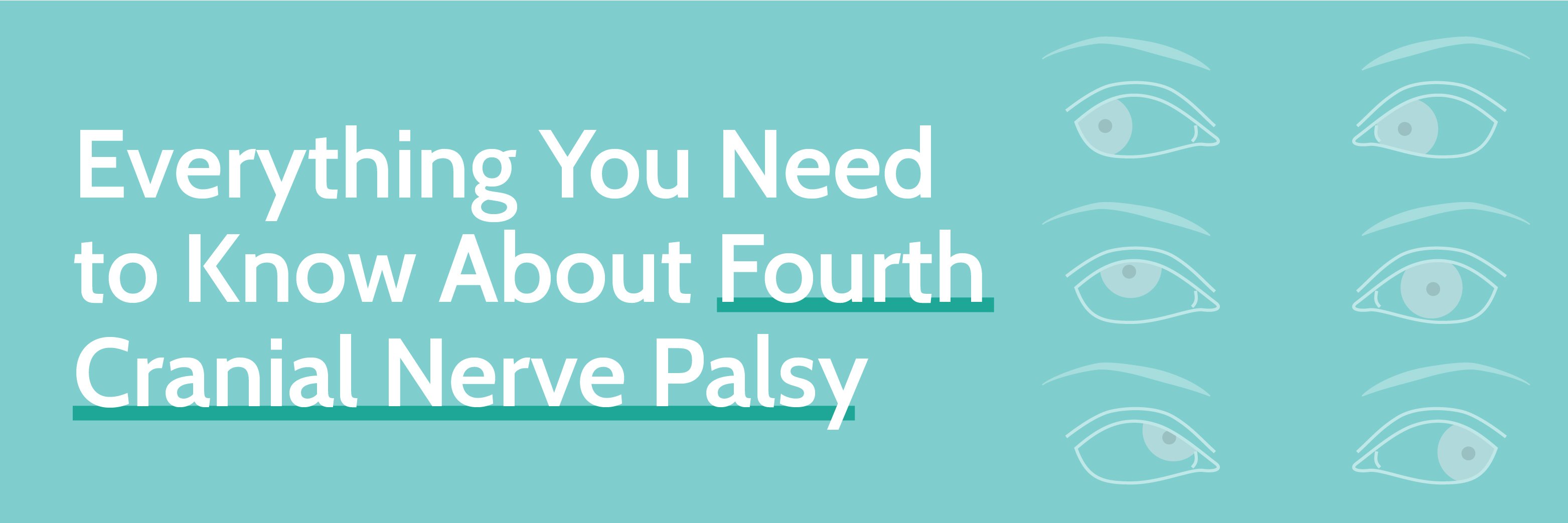
The fourth cranial nerve (trochlear nerve) controls the actions of a single extraocular muscle; the superior oblique. The trochlear nerve has several unique aspects; it is the smallest nerve in terms of the number of axons it contains, it has the longest course through the skull than any other cranial nerve, it is the only cranial nerve that exits through the dorsal aspect of the brainstem, and it innervates the superior oblique muscle on the contralateral side from its nucleus.
Diseases or injuries of the fourth cranial nerve can lead to paralysis or weakness of the superior oblique muscle which will cause certain signs and symptoms that you will see upon examination.
Here we will review everything you need to know about trochlear nerve palsies in the event that a patient with superior oblique weakness walks in your door!

Symptoms
The most common symptom of a fourth nerve palsy is diplopia. Patients will typically state that with both eyes open they see two images, with one image above the other, or above and to the side of the other. In some cases, patients may also note that one image appears slightly turned compared to the other. If there is little separation between images, the overall image may just seem blurred to the patient rather than double.
Other possible symptoms include a noticeable hyper-deviation of one eye. The patient may also present with a head tilt in an attempt to compensate for the deviation. And rarely, patients may experience pain above the eyebrow.
Etiology
In adults, the most common etiology of an acquired fourth nerve palsy is an injury. This may occur as a result of whiplash or concussions, even if the injury appears to be minor. Another common cause of a trochlear palsy is poor blood flow secondary to diabetes. Furthermore, in many cases, the cause of the nerve palsy is unclear; this is called an idiopathic fourth nerve palsy.
Other less common causes of trochlear palsies include: aneurysm, increased intracranial pressure, and infection.
In children, fourth nerve palsies are most often congenital (from birth).
Diagnosis
Paralysis of the trochlear nerve will cause weakness of the superior oblique muscle. When acting on its own, this muscle depresses and abducts the eyeball; therefore, a palsy of this muscle will cause difficulties with downward eye movement when testing EOMs. The affected eye will drift upward relative to the normal eye due to the unopposed actions of the remaining extraocular muscles.
Treatment
Treatment of trochlear nerve palsies depends on the etiology of the condition. Idiopathic fourth nerve palsies typically resolve on their own. Palsies caused by injury also often improve with time. If the palsy is due to ischemia from diabetes, better control of the systemic condition should allow for improvement. If the palsy is secondary to a compressive lesion, surgery is often indicated. In the interim, symptoms of fourth nerve palsies can be treated with a prism in glasses or an eye patch to rid diplopia.
If you see a patient that you suspect has a nerve palsy causing vertical diplopia, and you aren’t totally sure of the paretic muscle, a Park’s 3-Step evaluation is the best way to identify the involved muscle. Stay tuned for a future blog post on this test!
